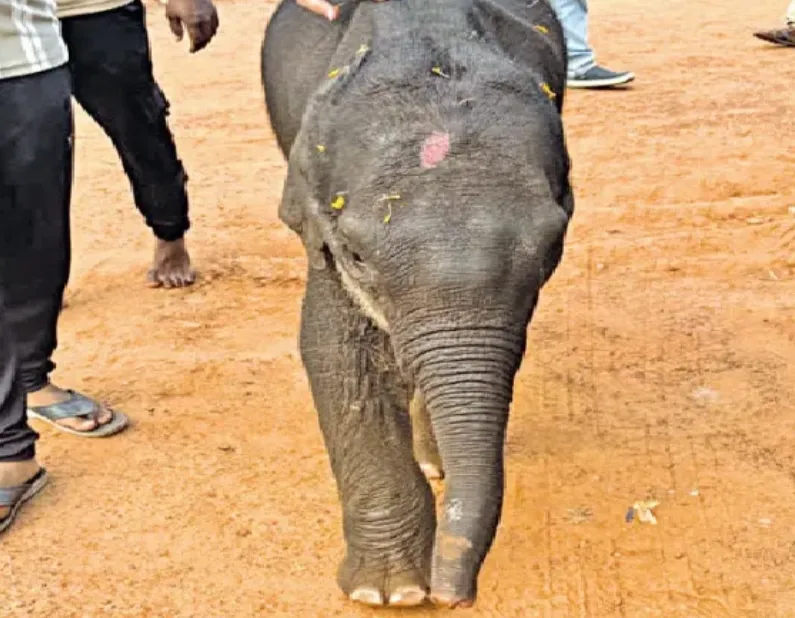

Bhubaneswar, Dec 23: Shambhu, the 6-month-old elephant calf at the Chandaka Elephant Training Centre in Khordha district, has tragically passed away after a short but difficult journey.
Shambhu had been receiving treatment for an injury to his right hind leg. The calf was discovered in an abandoned well in the Sukdola forest of Keonjhar on November 24, in severe pain. Forest department officials responded quickly and, with the help of a JCB machine, rescued Shambhu and released him back into the forest.
Despite their efforts, the calf was not accepted by his mother or the herd. Forest officials tried to reintegrate him, but these attempts were unsuccessful. On December 1, Shambhu was moved to the Padampur Elephant Training Centre, where he was given the name 'Shambhu'.
Later, on December 14, the young calf was transferred to the Chandaka Elephant Training Centre for kumki (trained elephant) training, along with 7 other elephants. Being the youngest among them, Shambhu quickly won the affection of the mahouts and forest staff.
However, despite the care and attention he received, Shambhu suddenly fell ill yesterday and collapsed early this morning. Local veterinarians were called in for an emergency check-up, but sadly, the calf succumbed to his injuries and passed away.
This loss has deeply saddened the staff at the training centre, as Shambhu was a beloved member of the herd. His brief but impactful life will be remembered by all those who cared for him.